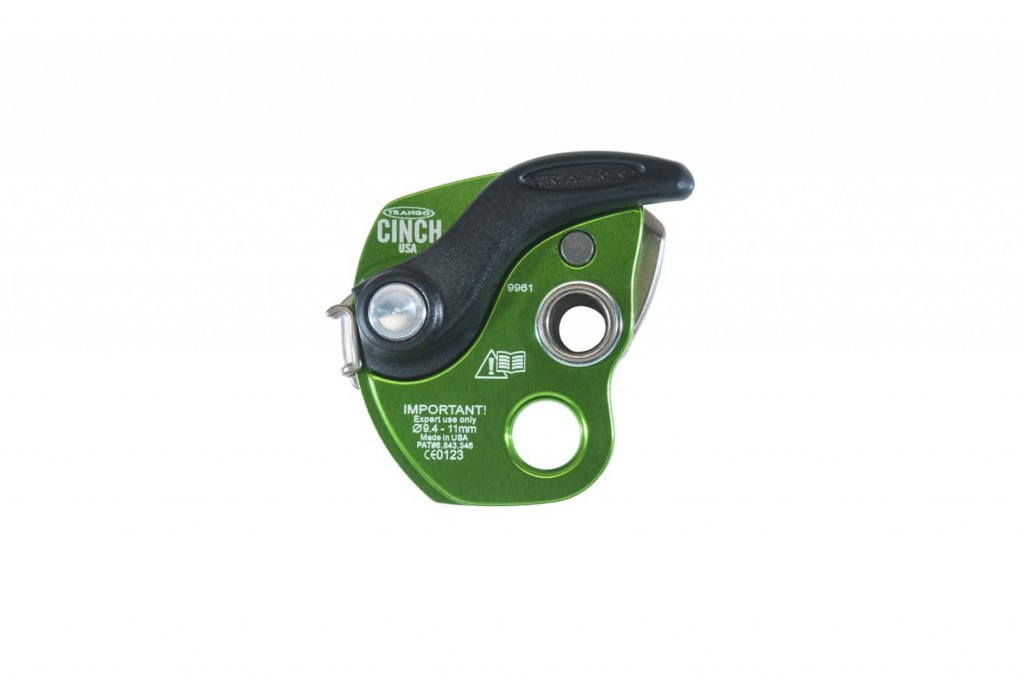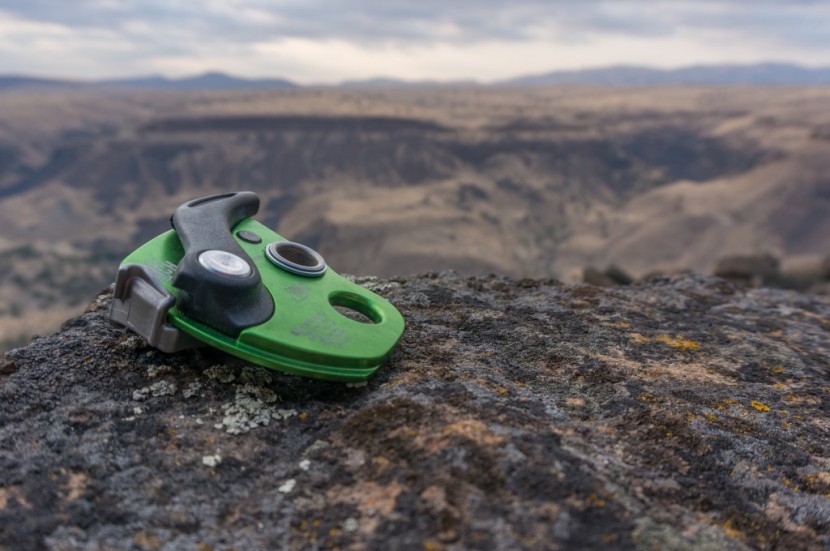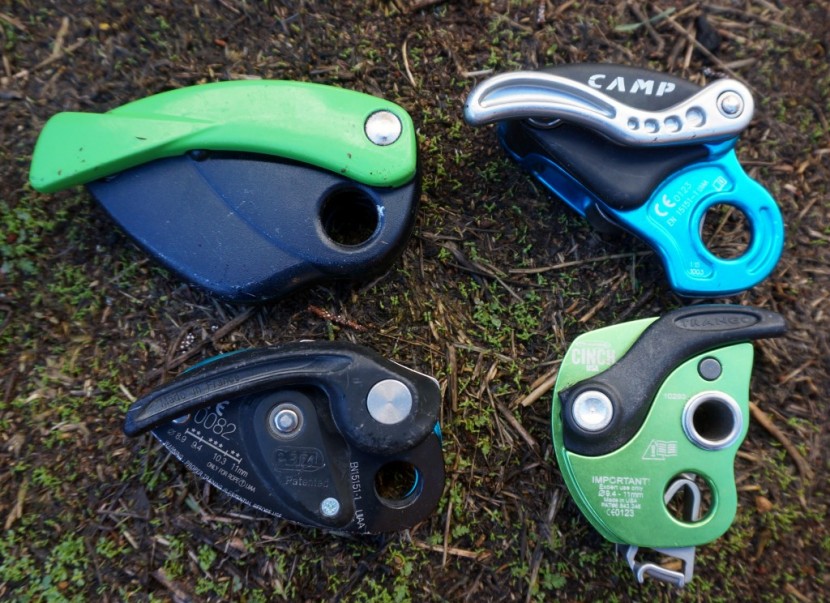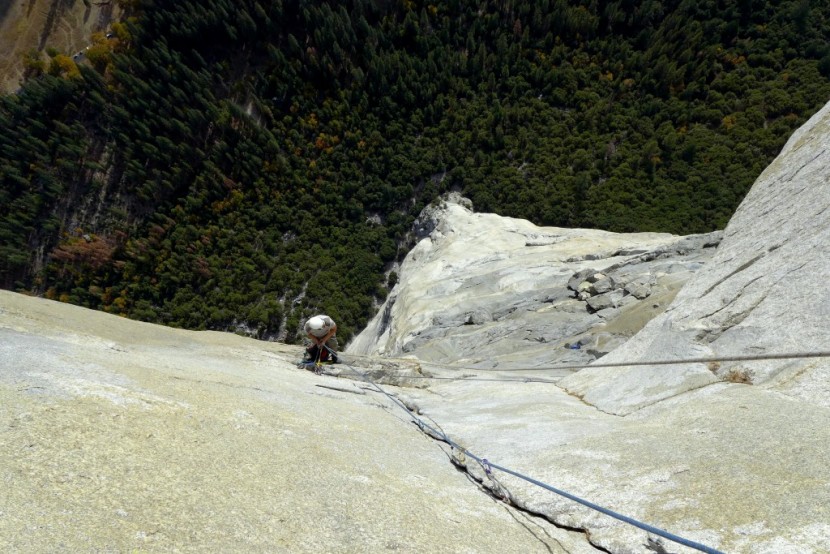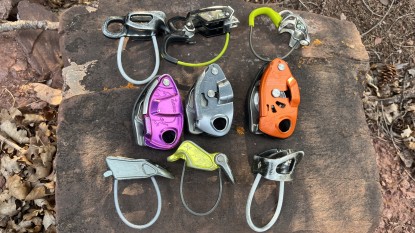For a few years, the Trango Cinch challenged the original Petzl GriGri for being the best-assisted locking belay device. Since then the Petzl GriGri came out and other companies entered the market with their own designs. The Cinch has lost its status as the lightest and smallest assisted locking model and new passive options now retail for half the price. Therefore, the Cinch no longer receives a Top Pick award, but it's still a solid belay device with the same smooth action and reliable catch it always had. Some of our testers struggled to master the unique feeding mechanism. However, once they did they were impressed with how quick it let them pay out rope.
Trango Cinch Review
Our Verdict
For a few years, the Trango Cinch challenged the original Petzl GriGri for being the best-assisted locking belay device. Since then the Petzl GriGri came out and other companies entered the market with their own designs. The Cinch has lost its status as the lightest and smallest assisted locking model and new passive options now retail for half the price. Therefore, the Cinch no longer receives a Top Pick award, but it's still a solid belay device with the same smooth action and reliable catch it always had. Some of our testers struggled to master the unique feeding mechanism. However, once they did they were impressed with how quick it let them pay out rope.
Our Analysis and Test Results
The Trango Cinch is an assisted locking device that is the closest competition to the Editors' Choice winning Petzl GriGri 2. Some say that it works better for lefties.
Catch/Bite
The Cinch is designed for ropes between 9.4 and 11.0 mm. Within this range it capably catches falls and locks off a hang-dogging partner, saving you hand strength and boosting peace of mind. After locking, the motion to unlock it is a counterintuitive squeeze with the left (non-brake) hand. This is cool because your brake hand never has to move. We recommend anyone trying the Cinch for the first time watch the instructional video several times. You'll find a link to that video at the bottom of this page. The belay techniques required are unique to the Cinch and can take some time to master. However, once you do, it's as every bit as functional as the other assisted locking devices.
Lowering/Rappelling
Feeding Slack
Feeding slack with the Cinch is different than all the other devices, it has to be held horizontally and rigged for rope to feed through from right to left. The thumb and index finger of your right hand keep it in this position while the remaining three fingers control the brake strand. Our testers found this motion the hardest to learn and it received many complaints from short-roped leaders during their education. Eventually some testers mastered the technique though, and the Cinch proved to be one of the smoothest at feeding slack.
Auto-block (resistance belaying a second)
The Cinch tied with the Petzl GriGri 2 for the lowest resistance when belaying a follower directly off an anchor. The Cinch performed slightly better with a smaller 9.0 mm rope and the GriGri 2 better in a larger 10.1 mm test. Both devices have a significant advantage over other models in this application and can be employed on long multi-pitch climbs to save your strength for the climbing instead of the belaying.
Weight/Bulk
At 6.6 ounces, for several years the Cinch was the lightest and smallest mechanical assisted locking device available. Ever since the 2011 introduction of the 6.1 oz GriGri 2, that's no longer the case. It does retain its lead in size though, and is currently the smallest of these devices.
Durability
Best Applications
This is ideal for experienced climbers for sport, cragging, gym, and big walls. It can do it all (except rap two ropes).
Value
With an MSRP of $85.95, the Cinch is the cheapest active assisted locking device. However, durability issues lead us to suspect that the other more expensive options provide a better value over their whole lifespans. This includes even the $200 Camp Matik, which we think could potentially last three times as long.


